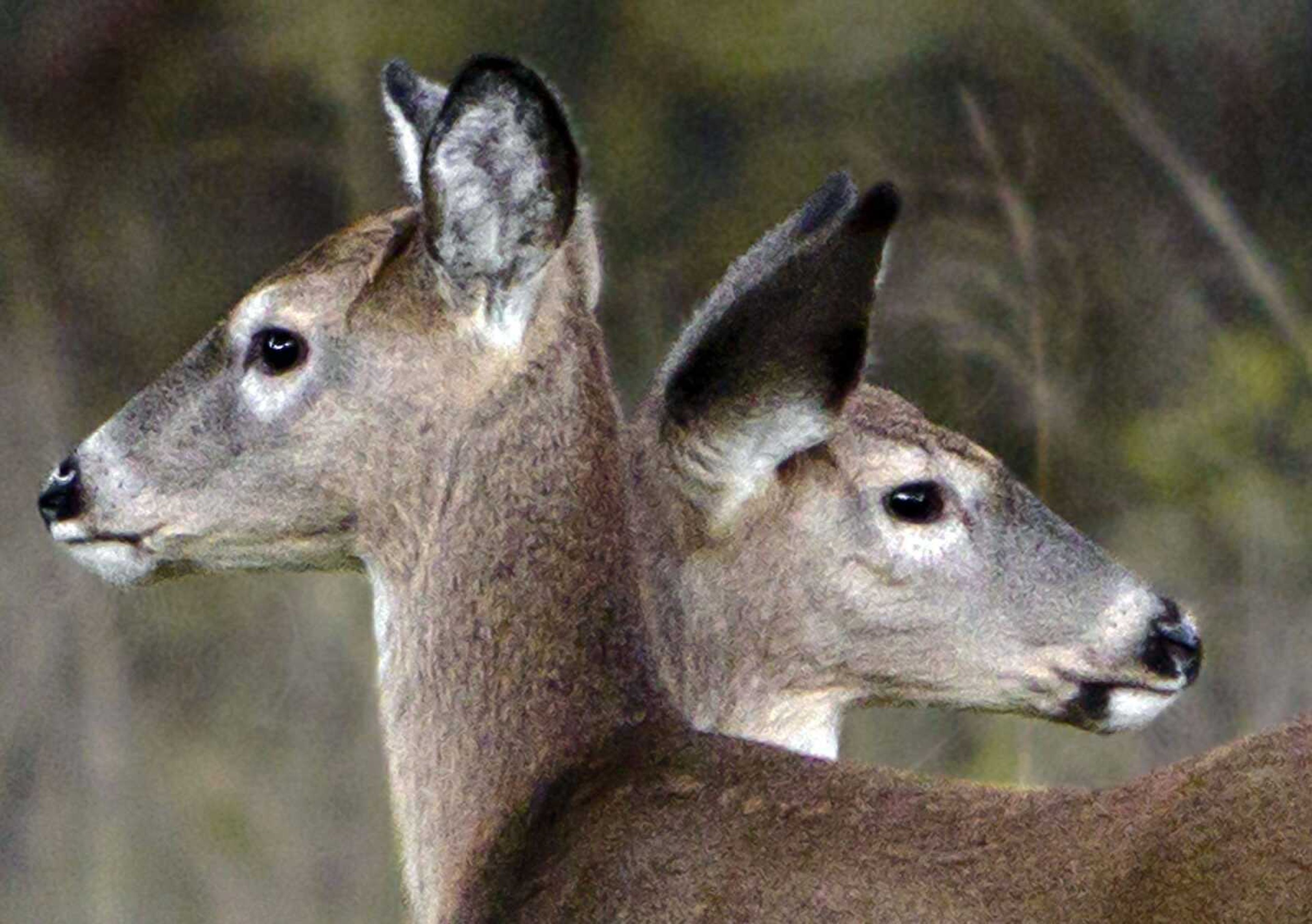Deer-breeding businesses are in it for the bucks
Missouri hunters not only hunt deer in the wild. Some choose to hunt in big-game hunting facilities that breed or bring in the trophy bucks. Though there are no such facilities in Cape Girardeau, Bollinger, Perry or Scott counties in Southeast Missouri, 15 class-one wildlife breeders are spread between those counties, according to the Missouri Department of Conservation. A class-one wildlife breeder generally breeds white-tailed or mule deer...
Missouri hunters not only hunt deer in the wild. Some choose to hunt in big-game hunting facilities that breed or bring in the trophy bucks.
Though there are no such facilities in Cape Girardeau, Bollinger, Perry or Scott counties in Southeast Missouri, 15 class-one wildlife breeders are spread between those counties, according to the Missouri Department of Conservation. A class-one wildlife breeder generally breeds white-tailed or mule deer.
A total of 47 big-game hunting operations exist in the state, along with 253 captive cervid, or deer, breeders who raise deer either to be purchased by hunting preserves or for their owner's personal enjoyment, according to Tom Draper, deputy director with the department.
Beaver Creek Ranch near Poplar Bluff, Mo., is a big-game hunting facility. Photos on the ranch's website show hunters posing with big deer with large antlers showing dozens of points.
Kurt Humphrey, manager of the ranch, declined to comment about his operation or other captive-deer facilities.
Deer-breeding and hunting facilities recently have become entangled in the topic of chronic wasting disease and the part the facilities play -- or don't play -- in its spread.
Chronic wasting disease, or CWD, is caused by a mutated protein that attacks a deer's nervous system. It does not harm humans, but it is fatal to deer and elk. The protein can be spread by live deer or carcasses, including through the soil in which they decompose. There is no cure for the disease.
The disease has been found in captive and free-ranging deer in north-central Missouri, according to Missouri conservationists. There have been no cases of the fatal neurological disease found in Southeast Missouri.
White-tailed deer are a significant resource in Missouri and an important part of its culture, Draper said.
The department estimates 520,000 hunters hit Missouri deer trails each year, generating about 12,000 jobs and boosting the state's economy by about $1 billion.
"It's very important that we maintain the health of our white-tailed deer," Draper said. "That means free-ranging or deer that are behind a fence in a captive-cervid facility."
Captive-deer facilities were needed at the turn of the 20th century because of low numbers, he said. It took several decades to ensure white-tailed deer populations were going to exist on the landscape.
The department's view is captive deer are on the landscape and will continue to be, and it will do its best to ensure the health of the species "no matter what side of the fence they're on," Draper said.
The Missouri Department of Conservation is considering stricter rules for hunting ranches to prevent the spread of CWD, which could include improving fencing standards and prohibiting the importation of live deer into Missouri.
Separation of free-ranging and captive deer is an important concept, Draper said, so the question is how to maintain good separation.
The Missouri Whitetail Breeders and Hunting Ranch Association plans to ask lawmakers to declare the captive deer "livestock," The Associated Press has reported. That would mean they would be regulated by the Missouri Department of Agriculture, not the conservation department, which regulates all 1.4 million deer in the state.
Sam James, president of the association, has breeding and hunting facilities on his 1,050 acres about 20 miles east of Columbia, Mo.
James holds degrees in wildlife and business and got into the business 1992 because of his love for white-tailed deer.
Free-ranging deer carry much more disease than captive deer because they are "genetically inferior," he said, and captive deer are tested more often than free-ranging deer.
"Our deer are much more regulated than cattle," James said. "They're the healthiest animals in the world, probably."
Each deer has a paper trail, including CWD testing, tuberculosis testing and DNA identification, James said.
"You push a lot of paper," he said of breeders.
Jason Sumners, research biologist with the Department of Conservation, said breeding deer is no different from breeding animals such as dogs for selective traits. To do so, Sumners said deer breeders breed bucks with superior antler characteristics.
Some breeders buy semen from superior bucks to artificially inseminate does.
"Large antler development doesn't in any way necessarily correlate to fitness or health of the animal," Sumners said.
One who raises deer or "alternative livestock" holds many goals, James said. The first is raising a healthy animal with a big body. Once that's done right, a breeder starts pushing genetics that breed deer for typical or nontypical antlers, he said.
Some breeders breed bucks to grow about eight antler points, much like free-range deer, while others breed deer to develop 50 or more points, he said.
James said he has raised 1-year-old deer with superior antler sizes compared to free-range deer.
A segment of the hunting population "desires to purse those" types of deer and does so behind high fences, Sumners said. Some hunters, such as the Missouri Show-Me Big Bucks Club, are ethically opposed to hunting deer that are not free-ranging.
Big-game hunting and breeding facilities have increased in number over last few decades, and the industry is growing, Sumners said.
Those who have such facilities include people who just enjoy and are passionate about deer, he said, and those who are in the business to make money.
"It's a way of life for us," James said.
ashedd@semissourian.com
388-3632
Connect with the Southeast Missourian Newsroom:
For corrections to this story or other insights for the editor, click here. To submit a letter to the editor, click here. To learn about the Southeast Missourian’s AI Policy, click here.









